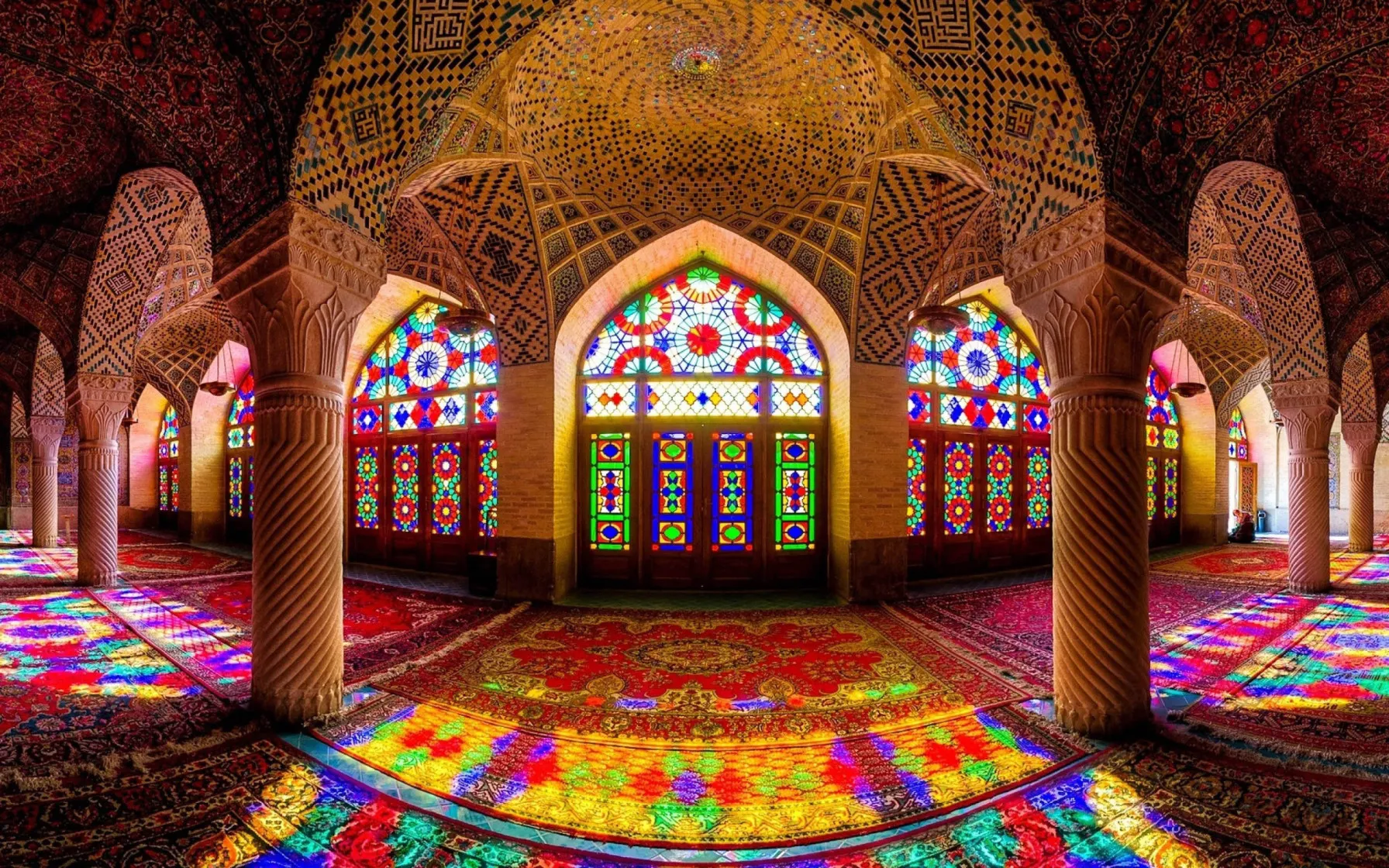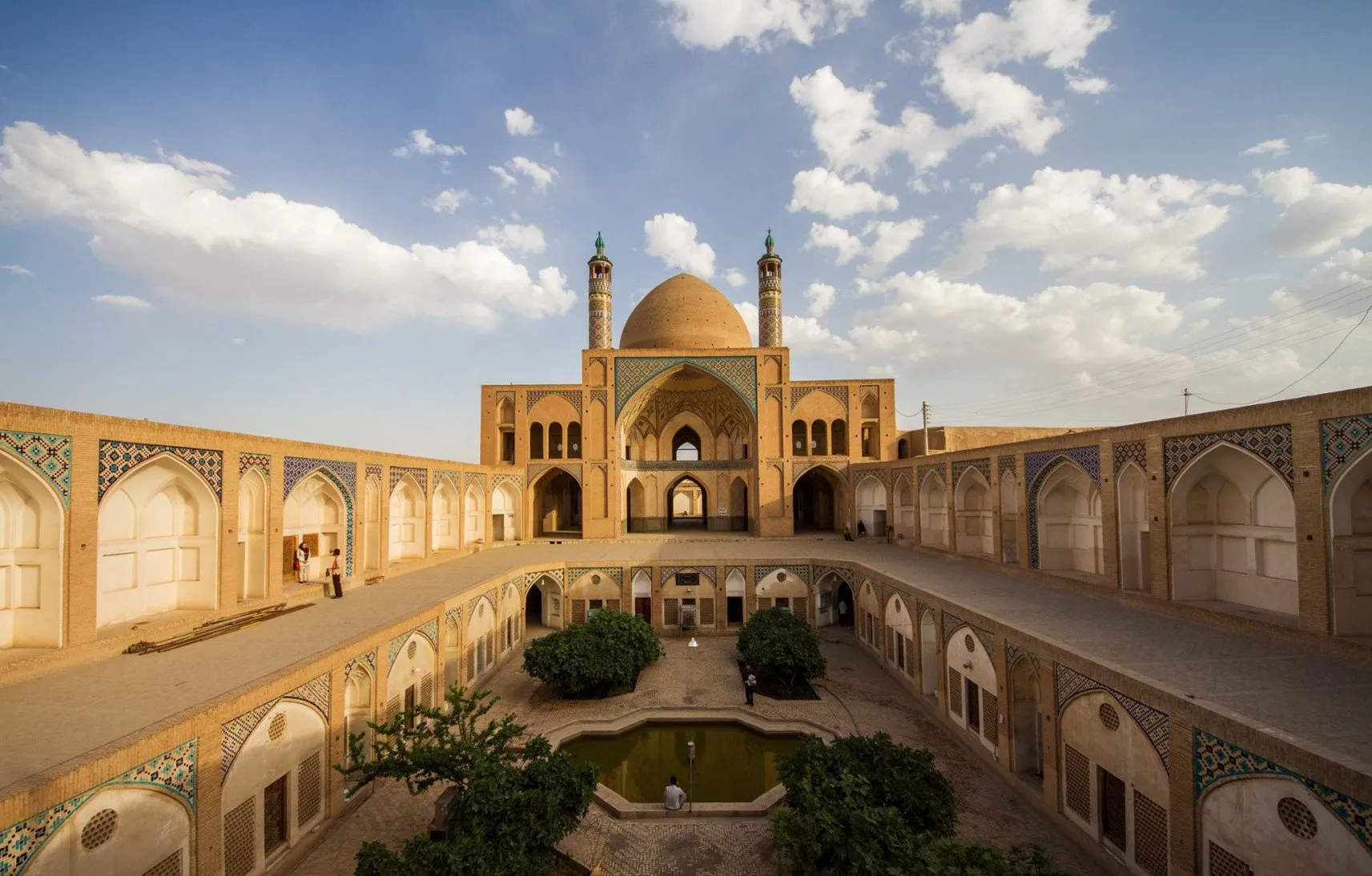Poetry is loved, appreciated and practiced by Iranians for thousands of years. People of Iran live with poetry. Almost all of Iranian customs and traditions include poetry in one way or the other. Be it the presence of a book of Iranian poetry, most commonly the Diwan of Hafez or Shahnameh of Ferdowsi on the Haft-Sin tables that Iranians set for their New Year, or gathering together on Shab-e-Yalda and reading the Poems of Hafez.
Reading Iranian poetry aloud, apart from being an enjoyable pastime is believed by many Iranians as to be a free class in which you can learn about life and human beings, as most of the Persian poetry is highly didactic. As the most distinguished part of Persian literature, parts of Persian poetry are proverbs commonly used by people, practitioners of different genres of music also use them as the lyrics for their songs.
Henri Masse, the French orientalist believed Persian literature to be held upon four columns, four poets to be exact. In the matter of comparison, he believed that Ferdowsi can be compared to Homer, Saadi can be compared to Anatole France, and Hafez can be compared to Goethe, although Goethe considered himself a pupil of Hafez. But the fourth column being Mowlana, or Rumi, as he is known in the Western culture by this name, is incomparable to any western poet, as his standing point is so high no one could have ever imagined such a place to get. Rumi as a 14th-century poet is known to be the best selling poet of the United States to this day. A Persian poet, he had to flee the country due to the Mongol invasions and lived almost all of his life in Konya, nowadays Turkey. Thus his tomb is in Konya and it is the final destination of pilgrimage for many Sufis.
The tomb of most of the Persian poets is a holy place for Iranians. They are also important architectural and artistic sites which are visited by people. In this blog, I am going to share with you some of the facts about Persian poets and the importance of Iranian poetry. I will also talk about their tombs which are tourist sites you would love to visit as it will be an experience completely worth it!
Ferdowsi; the Beholder of Iranian Poetry
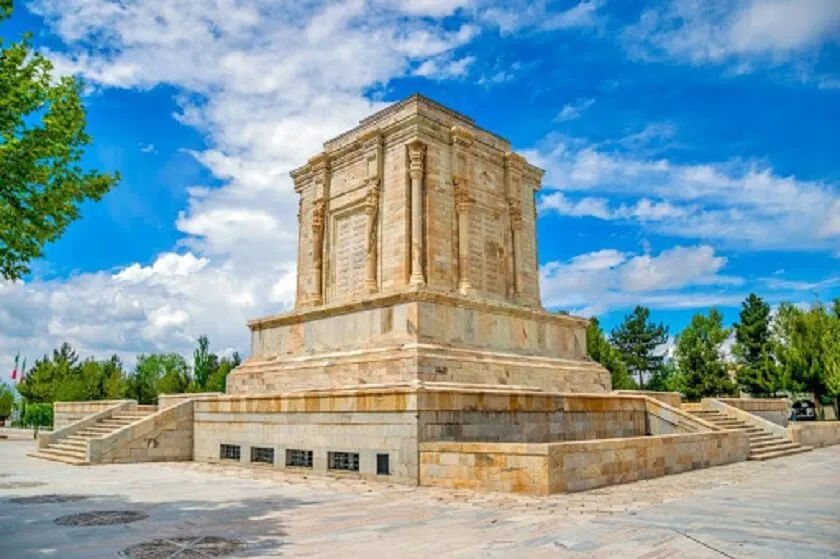
The most influential figure of Persian poetry, Ferdowsi has written the world’s longest epic poem written by one single poet, the Book of Kings or Shahnameh as it is called in Persian.
The Book of Kings as its name suggests tells the story of Old Iranian kings and heroes. Ferdowsi has written this huge work during thirty years of his life, and he himself writes in one of his poems:
I have suffered a lot during these thirty years
But I have reincarnated Persians with my work.
As he has started writing his epic masterpiece on Iranian legends after the Arab invasion. His work is also significant as he kept the Persian language alive alongside the Persian customs and traditions after these invasions.
In the older days, people in different towns of Iran would gather after a long day of work in tea houses. There were some people who knew the poems of Shahnameh by heart, they were usually carrying big paintings of these heroes of Shahnameh, and they would recite these poems with those pictures being held. This way the story of the old legends was constantly retold and it was an enjoyable pass time. It was called Naghali. It is still done as an art form in many cities of Iran, and there are tours you can book in which you can experience Naghali.
If you visit the city of Mashhad in the Khorasan district located in the northeast of Iran, you can go to Tus where the tomb of Ferdowsi is. The marble structure being built in 1934 by the famous Iranian architect Houshnag Seyhoun is an architectural masterpiece. Many tours offer this extraordinary experience. Another interesting fact is that Ferdowsi was actually buried in his own backyard when he passed away. So the place you visit was actually the poet’s own house in 1020, the year he passed away.
Khayyam; the Poet Philosopher, Astronomer, Mathematician
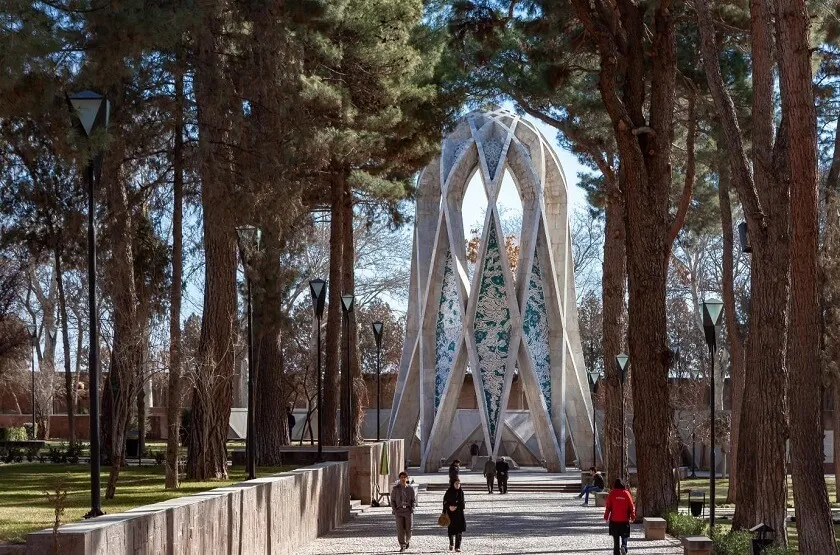
Another place you need to visit when you go to the Khorasan district is the city of Nishabur which is both the birth and the burial place of the great Iranian poet Omar Khayyam.
Edward Fitzgerald translated the body of poems which were believed to be by Khayyam. The case with this particular poet is that after his death, anyone who wrote Iranian Poetry in the manner of couplets attributed their poems to Khayyam. As a result, for a very long time, no one really knew which poems were actually written by Khayyam. It took many years, lots of scholars and new findings of original texts by Khayyam that made this case somehow clear.
Khayyam was not just a poet. He was a mathematician, astronomer, and philosopher. He contributed to the Persian civilization in all those manners. As Will Durant believes; “Your most famous poet belongs to the Seljuq age. Omar Khayyam, of course, was above all a scientist, whose quatrains were the casual amusement of one whose greatest pleasures were mathematics and astronomy; do not take too seriously his paeans to wine. His proposed reformation of the Persian calendar was more accurate than Europe’s present Gregorian calendar; this errs by a day in 3,330 years, Omar’s by a day in 3,770 years. I mourn that I shall not see his tomb in Nishapur, nor the artistic wealth of Mashhad; nor shall I see the little town near Tiflis where Nizami sang of Layla and Majnun; nor the shop in Nishapur where Attar sold perfumes. But I trust that I shall see Shiraz, and thank it for Sa’di and Hafez.”
An example of his quatrains is
To wisely live your life, you don’t need to know much
Just remember two main rules for the beginning:
You better starve, than eat whatever
And better be alone, than with whoever.
His tomb in Nishabur is again an architectural masterpiece by the great Iranian architect Houshang Seyhoun.
Another example of Edward Fitzgerald’s translation of Khayyam:
A Book of Verses underneath the Bough,
A Jug of Wine, a Loaf of Bread—and Thou
Beside me singing in the Wilderness—
Oh, Wilderness were Paradise enow!
Hafez; the Persian Oracle
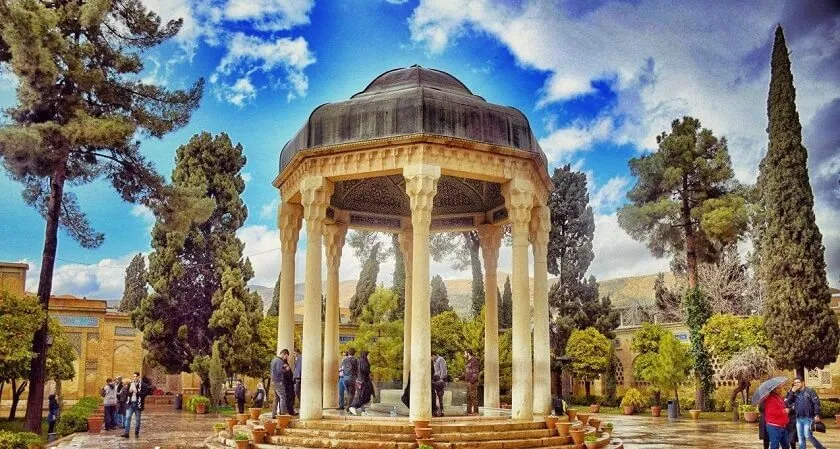
One book is most definitely present at every Iranian’s home, Divan-e-Hafez, or the book of Hafez’s poetry. As his name means and suggests he is considered to be the keeper and memorizer of the Iranian’s beliefs. Born in the 14th century, his poetry was also highly influenced by the invasion of Mongols. The story has it that his poems were washed away several times by his family members in order not to be found by the Mongol governor’s officials and thus become some sort of evidence by which Hafez can be accused and caught. He has to say what he wished to say in a special manner as if he has not said it at all. He also had to know and memorize all his poems by heart to be able to write them down again in case of being washed away. His wit, intellect and subject matters surpassed time and have influenced post-14th century Persian poetry like no other and also the life of the people.
One of the most significant experiences one can get when visiting Iran and the city of Shiraz is visiting the tomb of Hafez. One of the country’s architectural masterpieces, it is designed by the French architect and archaeologist Andre Godard in 1935. Widely known as Hafeziyeh, it is surrounded by a beautiful garden in which you can read Hafez’s poetry in the Iranian way. The way is that you can ask Hafez questions and randomly open his Divan, and he will answer you back. And then you can finally visit the marble tomb of this particular Persian poet, and believe me, this whole experience will elevate your soul. Many tours offer this experience. We at Visit Our Iran also consider visiting Hafeziyeh a must while offering tours on the city of Shiraz.
Hafez is also one of the lucky Persian poets in that he knew the wide range of acceptance of his poetry in his own time and it enabled him to believe that his poems will live on. Like they did as we see today. He writes:
With the lyrics of Hafez from Shiraz,
The black-eyed Keshmiris and the Turks of Samarghand dance.
Or,
My poetry is so highly accepted by the world,
That the king of the seas will full my mouth with pearls.
Or,
All the parrots of India will sweeten their mouths,
With the sweetness of this Persian sugar going to Bangale.
It is remarkable to note that the great German writer and philosopher, Johann Wolfgang von Goethe considered Hafez as a Master and referred to him and his style and subject matters several times. He considered himself a pupil of Hafez who tries to be as good as his master. He wrote his famous book of lyrical poetry, West-östlicher Diwan under the influence of Hafez.
This way, as Hafez himself, believed his poetry has lived on through generations, and among nationalities.
Want to go deep in to the heart of Persian Culture? Dig Deep into the Enriched Culture of Iran. Check out all of our In-depth cultural tours here.
Saadi; the Persian Advisor of Iranian Poetry
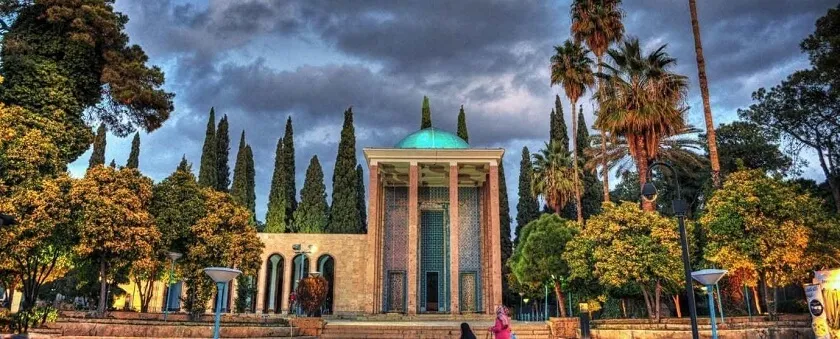
A major Persian poet and prose writer, Saadi Shirazi (Saadi from Shiraz) was also a teacher and a traveler. He shared his experiences from his numerous travels through his poetry and prose writings, and he is considered as one of the highly didactic poets of Iran. He is widely taught in schools. His moral standpoints and his view of life have given people from the time of his life, 13th century to this date advice and guidance.
This Persian poet has been given the title of the Master of Speech. This Master had lots of pupils which he received at his own house which was called Khanqah. Moreover, this is where he was buried after he passed away. A beautiful garden nowadays and the final home to many great poets and thinkers, Saadieh in the city of Shiraz has been the Persian poet’s own house back in the 13th century. Saadi was one of those poets who have the privilege of knowing the wide range of acceptance of his thought and work, and he actually worked and lived by his knowledge and writings. This wide range of acceptance caused many rulers to build a tomb for him, but the tomb you will visit at Saadieh today is an architectural masterpiece in a beautiful garden by the Iranian architect Mohsen Foroughi. It is a masterpiece as it is a combination of the old and new Iranian architectural traits. On tours to Shiraz, visiting Saadieh is on the top of the list of offers.
Saadi writes:
From the grave of Saadi, you can smell love,
If you smell, thousands of years after he is dead.
Iranian Poetry; a Precious Tradition, a Necessity for Life
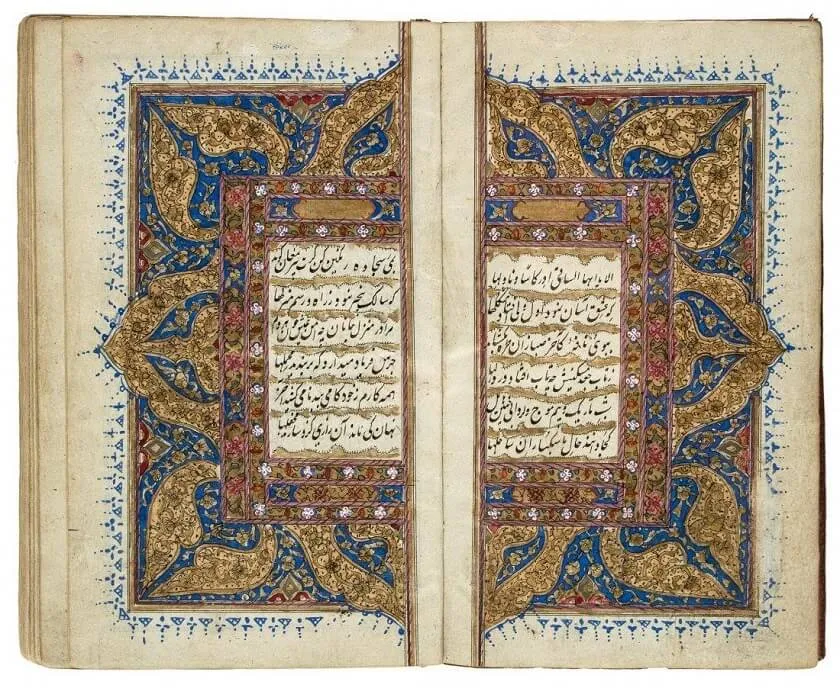
I remember traveling to a small village near Naeen, a city bordering one of the two deserts of Iran. While talking to the locals, an old man who was a farmer came to me and started talking. He used lines of Persian poetry here and there while talking. I asked him about his life and he told me that he is a farmer, and he just knows how to read and write, but he remembers his mother as she used to sing her children lines of Persian poetry she knew by heart. This is one of the many examples that can show us what poetry means to the people of Iran. The same man told me about an incident that happened many years ago when an official was meant to visit their village. Their village needed a new road and the people decided that the best way to propose their claim is to write it in the form of a poem and present it to the official. They asked the most well-known and educated person of the village to compose this poem about a new road and they eventually presented it to the official and got what they wanted.
Poetry lives with Iranians in their everyday life, whether the poems of the classic literature or the modern ones. When the new styles of poetry were introduced to the world literature, Persian poets like Forough Farrokhzad and Sohrab Sepehri adapted those forms and continued the legacy of composing poems. Although the sonnet and other forms of poetry were never completely forgotten and Persian poets like Fereidoun Moshiri kept using them. If you visit Tehran, in the northern part of the city is an old cemetery in which are buried two of the greatest modern Persian poets, Forough Farrokhzad and Fereidoun Moshiri.
Iran is the land of poetry, in every city and at the heart of each Iranian that you meet, poetry lives and grows, as Forough writes:
I will plant my hands in the garden,
They will blossom, I know.

